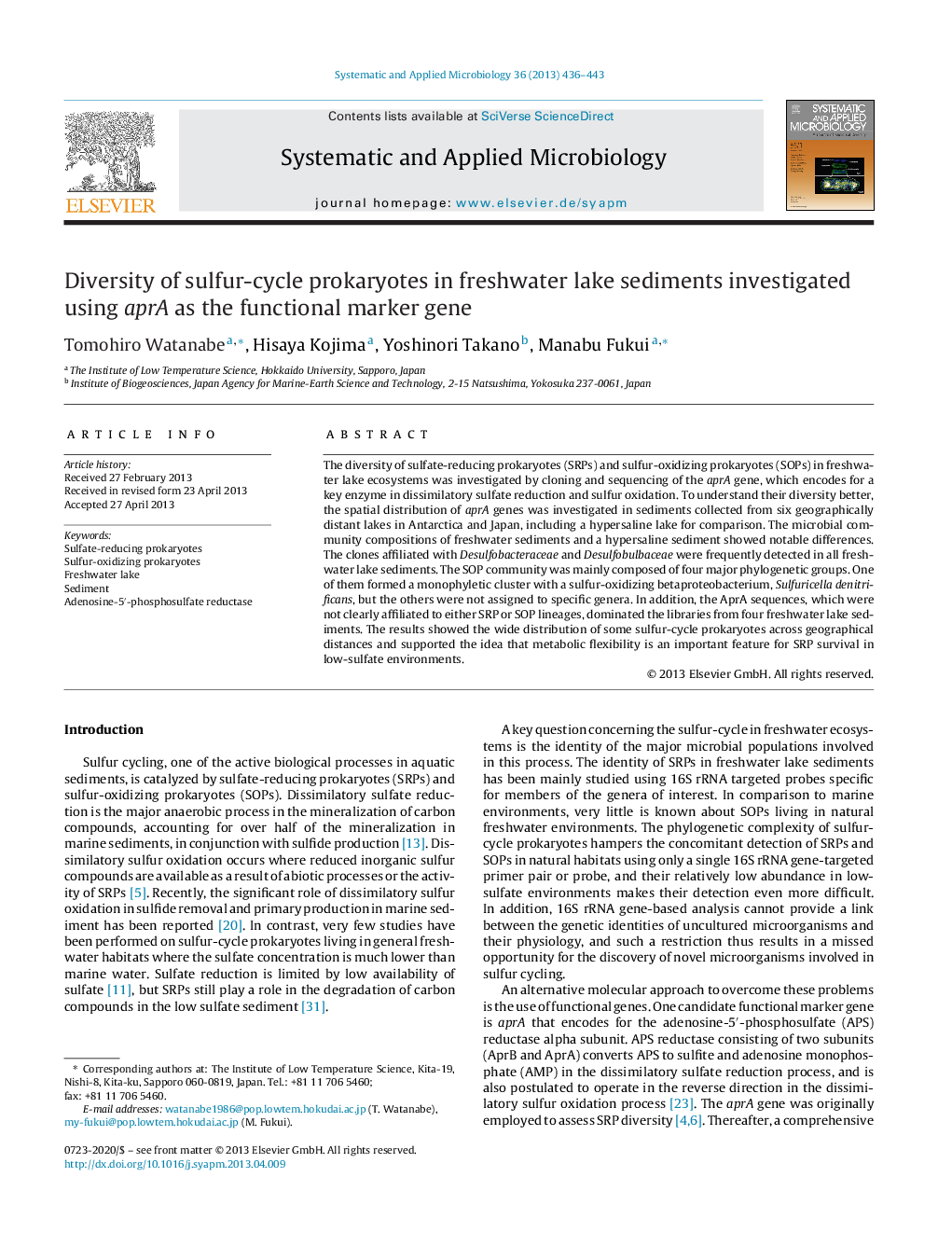| Article ID | Journal | Published Year | Pages | File Type |
|---|---|---|---|---|
| 2063764 | Systematic and Applied Microbiology | 2013 | 8 Pages |
The diversity of sulfate-reducing prokaryotes (SRPs) and sulfur-oxidizing prokaryotes (SOPs) in freshwater lake ecosystems was investigated by cloning and sequencing of the aprA gene, which encodes for a key enzyme in dissimilatory sulfate reduction and sulfur oxidation. To understand their diversity better, the spatial distribution of aprA genes was investigated in sediments collected from six geographically distant lakes in Antarctica and Japan, including a hypersaline lake for comparison. The microbial community compositions of freshwater sediments and a hypersaline sediment showed notable differences. The clones affiliated with Desulfobacteraceae and Desulfobulbaceae were frequently detected in all freshwater lake sediments. The SOP community was mainly composed of four major phylogenetic groups. One of them formed a monophyletic cluster with a sulfur-oxidizing betaproteobacterium, Sulfuricella denitrificans, but the others were not assigned to specific genera. In addition, the AprA sequences, which were not clearly affiliated to either SRP or SOP lineages, dominated the libraries from four freshwater lake sediments. The results showed the wide distribution of some sulfur-cycle prokaryotes across geographical distances and supported the idea that metabolic flexibility is an important feature for SRP survival in low-sulfate environments.
